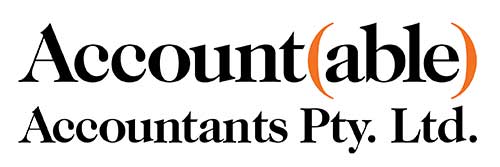Investment Outlook for 2021 – Positive but realistic

2021 at a glance
2020 was a nerve-racking ride for investors with the COVID-19 pandemic wreaking havoc on economies and markets and causing immeasurable human tragedy. Despite this, as we enter 2021, financial markets have locked and loaded a considerable amount of good news for the year ahead. We think this optimism is justified due to three key factors:
1. Policy makers around the world continuing to inject massive fiscal and monetary stimulus to support the economy.
2. Vaccine development running well ahead of schedule (for example Moderna and Pfizer-BioNTech) although vaccination rates are lagging.
3. Strong returns from emerging technology based economic models, led by the US and China, which will continue beyond the pandemic.
2020 a sprint, but now the marathon
We entered 2020 with stellar investment returns from 2019. While indicators showed that the risk of recession was elevated in 2019, with the US Federal Reserve already starting to cut rates in response, markets were relieved that a recession didn’t eventuate. As the COVID-19 crisis escalated we had an unusual scenario where a deep recession finally arrived due to the pandemic rather than being driven by central bank action to manage through the economic cycle.
We consider the global recovery will continue for some years to come. Near term we expect the recovery to pause and consolidate through the first half of 2021 as infections surge and key economic leads flatten. As more vaccines become available and the rollout improves, a lift in growth over the latter part of 2021 and into 2022 should unfold. We believe policy makers will continue to support stronger growth and jobs with inflation below the sustained 2%+ target levels for some time.
Fiscal and monetary policy boosted returns
Even as the global economy plunged into a deep recession markets recovered strongly, buoyed by the unprecedented swift and large fiscal and monetary policy support. This lifted investment returns well above levels normally associated with deep recessions.
Swift and coordinated policy action resulted in markets not experiencing the sustained decline in returns that characterise most deep recessions. In fact, due to extreme fiscal and monetary support and the resulting collapse in financing costs, balance sheets for the household and corporate sectors across most economies strengthened, with cash balances surging and double digit returns across some markets and sectors. For 2021 we expect the strong levels of support to continue globally. In the US, the Biden Administration has outlined plans for a further large fiscal injection in 2021 and 2022.
Speeding up the shift to the new economy
While most markets recovered and delivered positive returns in 2020, the divergence between sectors and markets was very large. Technology based economic models emerged, led by the US and China, supported by powerhouse internet-based organisations, the continued rise of artificial intelligence and new privately owned financial regimes associated with blockchain and crypto currencies.
The COVID-19 pandemic intensified trends that had been in place for some years and is increasingly becoming embodied across new and traditional corporations. Technology superstars (the ‘FAANG’ stocks – Facebook, Amazon, Apple, Netflix and Google), delivered very strong returns along with emerging energy platforms such as Tesla. Many other technology exposures benefited from the pandemic as online and direct-to-home sales surged and expected earnings were revised up strongly to pre-pandemic levels. We’re likely to be working and shopping from home for some time yet and as such these markets are now entering 2021 fully valued for solid growth.
Markets like Australia and Europe with a limited technology exposure and more of a tilt to traditional ‘value’ stocks such as energy, property, materials and financials (banks) struggled for most of 2020 as earnings remained under downward pressure from the pandemic. However, over the latter part of the year, as the growth outlook brightened and broadened, these markets and sectors also started to recover as earnings improved.
Australian shares were up only slightly over the year, although in March 2020 they were down around 40%. The outlook for Australia has now improved sharply and we expect to achieve pre-pandemic levels by late 2021 or early 2022. As we navigate 2021, we would expect that Australia, despite lagging the technology rally, will continue to claw back some of the massive underperformance compared to markets with much larger technology exposures.
We also expect that ESG (Environmental, Social and Governance) factors will increasingly dominate the investment landscape in 2021. To a considerable extent, listed corporate and investor governance standards are offsetting some slippage in public sector governance, with market scrutiny driving towards sustainable returns for both shareholders and communities.
The hangover to linger for some time
While the outlook has brightened, there is no doubt that we will be left with a legacy of substantial government debt and historically low interest rates and bond yields. Some sectors of the economy, such as office and retail property, will continue to be challenged by the technology revolution even as the headwinds from the pandemic wane. Most economies will be constrained by a large number of poorly performing legacy assets that will need to be worked off for a long time.
While we expect that inflation will drift higher, these headwinds will likely mean that inflation will remain below the pace at which central banks will start to meaningfully shift from their current very stimulatory policy. These market conditions mean that expected returns for traditionally defensive assets such as bonds and cash are likely to remain very low for some time.
This environment should continue to support the share market. However, while the market was dominated by the technology sector in 2020, improved growth and the roll out of a broader array of vaccines in 2021 should see a tilt to sectors like financials, energy and materials on continued strong policy support and an improved growth outlook. However, we expect that technology, and growth stocks more broadly, will dominate medium-term market returns as new economic models continue to roll out.
On the horizon
Unprecedented, massive policy stimulus plus the COVID-19 vaccine development and roll out has provided a ‘shot in the arm’ for investor returns and global growth prospects in 2021. We expect that the global recovery will continue well into this year and beyond as the world emerges from the deep recession of 2020.
What should investors do in 2021?
As always, maintaining a long-term view and effective diversification across a range of different asset classes is important. While investments in one part of a portfolio may suffer losses, other investments may remain stable or even increase in value. Our portfolios use a mix of different asset classes and a range of fund managers with different investment styles to add additional layers of diversification.
Quality financial advice is key in this everchanging landscape. Speak to your adviser about keeping your plan for financial wellbeing on track.
IOOF
